The notes you make during your trip will significantly help you compose your article or text later. Time plays games with everyone, regardless of age, and even if you can claim to have a steely memory on which you rely 100%, it certainly won’t be able to retain even all the elements that can participate in creating a beautiful and successful story. That’s why taking notes is necessary when documenting on the spot. The more notes you take about your trip’s highlights, the more informative and flavourful your article will be. But… how to take travel notes?
At the beginning of my travels, I didn’t use to take notes. I thought I was young, had a good memory, and would have no problem remembering all the details. Besides, I had it in my head that I would be guided by the photos I took, and if I happened to forget something, a simple glance at one image or another would explode in my memory artifices of sensations and feelings experienced on the spot. I was wrong.
The first time I realized this was upon returning from a trip to Iceland. It was in 2006, which was a time when the Internet wasn’t quite as teeming with information as it is now. I had been invited to the launch of a mobile phone, but the program involved two days of visiting Iceland, an excellent reason for a travel article in a country that, at the time, was not very easy to get to. At one point, we reached an impressive waterfall, about which the guide began to tell us a wealth of information. I didn’t write anything down.
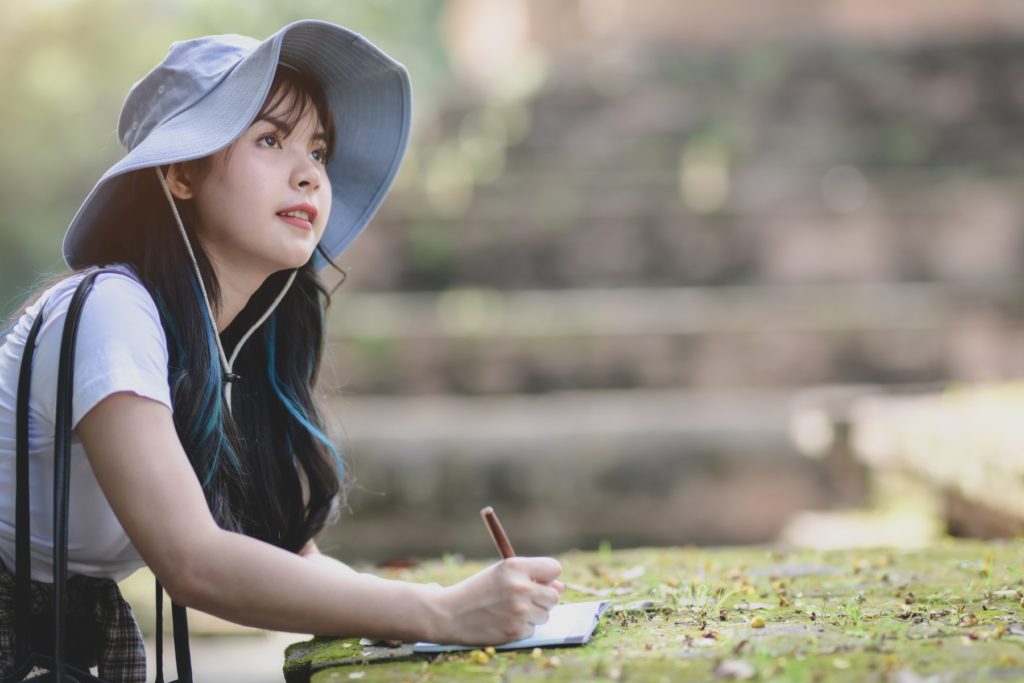
On my return to the country, I started writing the article two weeks late because I had a hectic time. And I got stuck when I arrived at the waterfall moment. I couldn’t remember any information about it. But worse, I couldn’t even remember the fall’s name. Which hadn’t even been listed in the trip program; I have no idea why.
The funny thing was that I wasn’t sure I had located the waterfall on the Internet either, so I had to message a person in the group who obviously didn’t know the name but had the guide’s number. Eventually, I found out: Svartifoss. And I decided that I would keep a notebook in my pocket whenever I went anywhere else.
There are several ways you can take “notes” during a trip. Mainly:
- – You can write in a notebook
- – You can write in a Notes app on your phone
- – You can make voice recordings
- – You can film while talking at the same time
I use the first two at the moment, but I think it also depends a lot on your situation. And I’ll come back to that below.
Why do you need to take notes? Because notes help you keep your feelings. It’s like putting plants in a herbarium, trying to retain some of their qualities. If you look at them in three months, the colors will have faded, the smell will be gone, but not wholly, and the moment you pick the plant will be in front of you.
Develop the sixth sense: the traveler’s sense
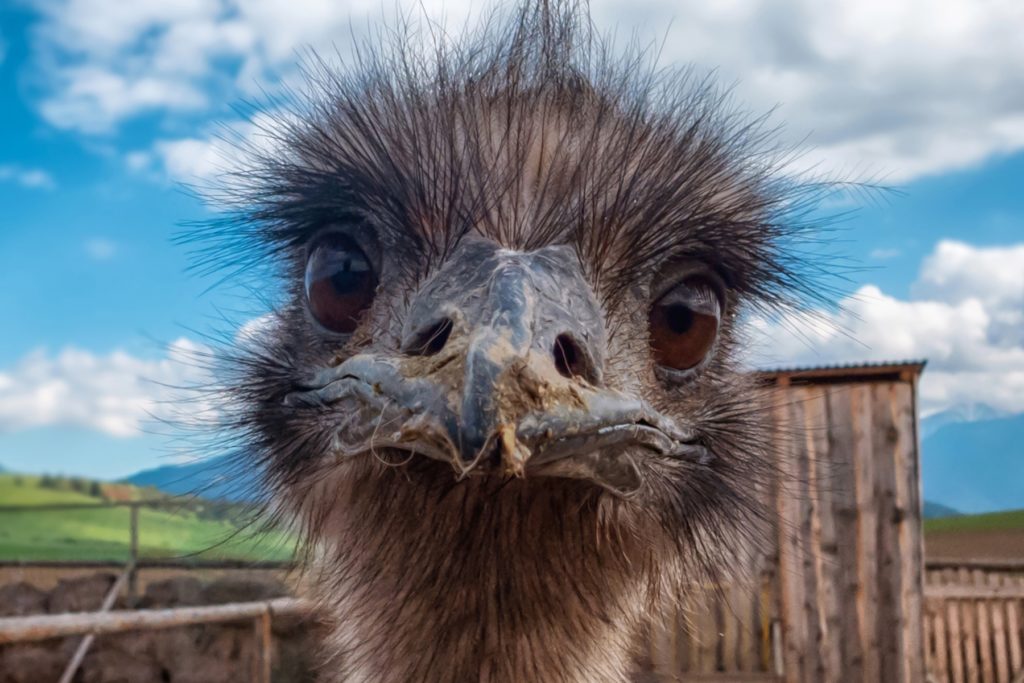
Attention! Don’t count on taking the best notes from the start. But that’s not because you couldn’t write. It’s simply because you’ll have to train your attention a bit, which isn’t very easy, especially if you’re not very curious. Specifically, you must learn to pay attention to certain aspects around you when you are in a particular place. Basically, scan everything!
What textures do the materials have? What do the indigenous looks convey? What color are the roofs? Why do women wear those special boots even though it’s 30 degrees outside? How does the echo sound in this cave? What do you liken the taste of crocodile meat to? How much does a taxi ride cost? And so on. In other words, not only do you have to be “on the ball” all the time, but you also have to train your distributive attention. And you have to use all five senses, and even the sixth one, which you definitely have but are not yet aware of: the traveler’s sense.
A good travel writer must have one essential quality: being curious. He is curious to the point of safety, beyond which he puts his life in danger. Curiosity is the first quality that later ensures a valuable travel text with a reader’s grip. Research! Listen! Feel! Ask!
He abandons shyness and gets in touch with the locals, asking them for details of what life is like where they live. Don’t be lazy: go to places of interest, even if they’re not necessarily near where you’re staying – a night market, an ancient temple, a bizarre building, a unique beach, a tavern where the locals eat, etc.
How to take travel notes
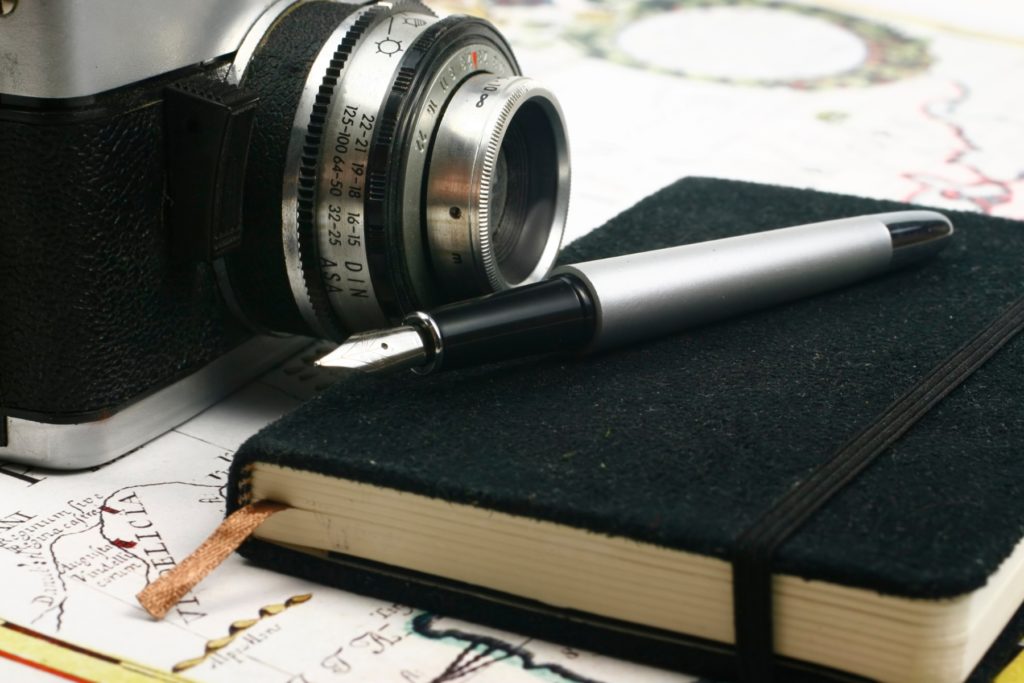
I prefer to take notes in a notebook or, in some situations, on an app on my mobile phone.
But it depends on the situation. Sometimes, you can take out your notebook without any problems and write down the various explanations the guides give or the sensations you experience at the time. But there are also times when writing anything down is more complicated or almost impossible. In addition, don’t forget that you will always have to take photos, which eats up time, concentration, and even attention to the environment.
With your mobile phone
The same with your mobile phone, but it also depends on how fast you can type. Often taking out your mobile phone in various situations can be inappropriate. Maybe you’re in the middle of a favela and don’t want to attract attention with your gadgets. Or perhaps you’re in a rugged environment, and taking out your phone comes with the risk of digging it up and losing it. Also, there are situations where being seen to be tapping your mobile phone may seem rude to the other people present (even if you’re just taking notes, some may think you’re texting).
With audio recording
Audio recording is fine, especially if you are traveling alone. Personally, I don’t prefer it because it involves wasting time when writing the article at home. I use audio recording for interviews, i.e., where there is no way to write down the interlocutor’s answers so quickly.
On video
Video recording with voice ‘explanations’ would be the complete form of travel ‘notes’. Especially since you’re shooting two birds with one stone: you also have video content and information (which won’t stay on the public version of the video anyway because you’ll add music or a voice-over). But again, searching for information on a video file will take time. Basically, you’ll have to search the video to extract the information to use in the text.
On the notebook
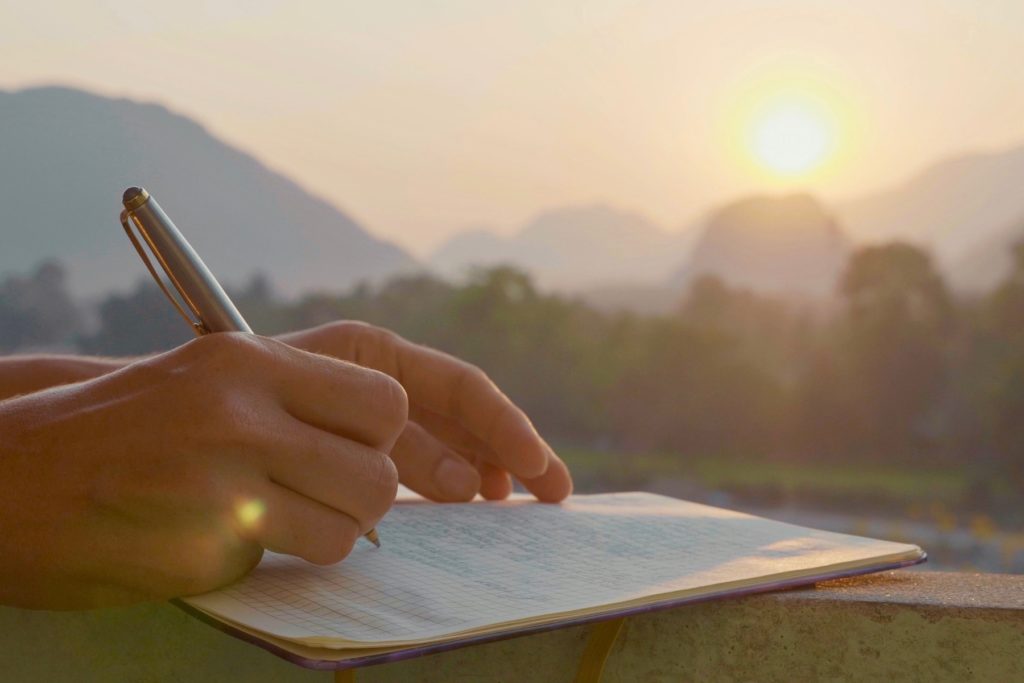
Going back to the traditional way of taking notes, you need to be quick. You don’t have to write down text when you make notes. First, give it a “title” so you know later where you were at the time. Let’s say: Angkor Wat. Then use short sentences. Reflection of the temple in the water. Buddhist monks in orange robes. The orientation to the west. The story bas-reliefs. And so on.
Underline the essential things, circle them, and make notes – the important thing is that when you return home, you can decipher your own hieroglyphics and use the information you have noted. Most likely, you won’t use it all. But it’s essential to have all the ingredients to choose from and to make the final preparation.
Write down the names of places, parks, mountains, places of interest, natural attractions, animal and plant species, etc.
Also, note down the telephone numbers and addresses of various contacts. Guides, people you interact with, officials, friends you meet during the trip, acquaintances of acquaintances. Do not write down passwords.
One vital thing is to take good care of your notebook. In short: don’t lose it, because once lost, all the information will disappear instantly and, what’s more, there is a risk that the notebook will end up in the possession of someone you don’t know how will use it and for what purpose. Just in case, write your name and the address where it should be sent on the first page of the notebook, in case the finder is a nice person.
As for what kind of notebook to use, I’ve said it before: I use Moleskine notebooks. These notebooks with a remarkable history come in various formats. Even though they’re a bit more expensive, they offer exceptional satisfaction when you put pen to paper and start jotting.
Other tips
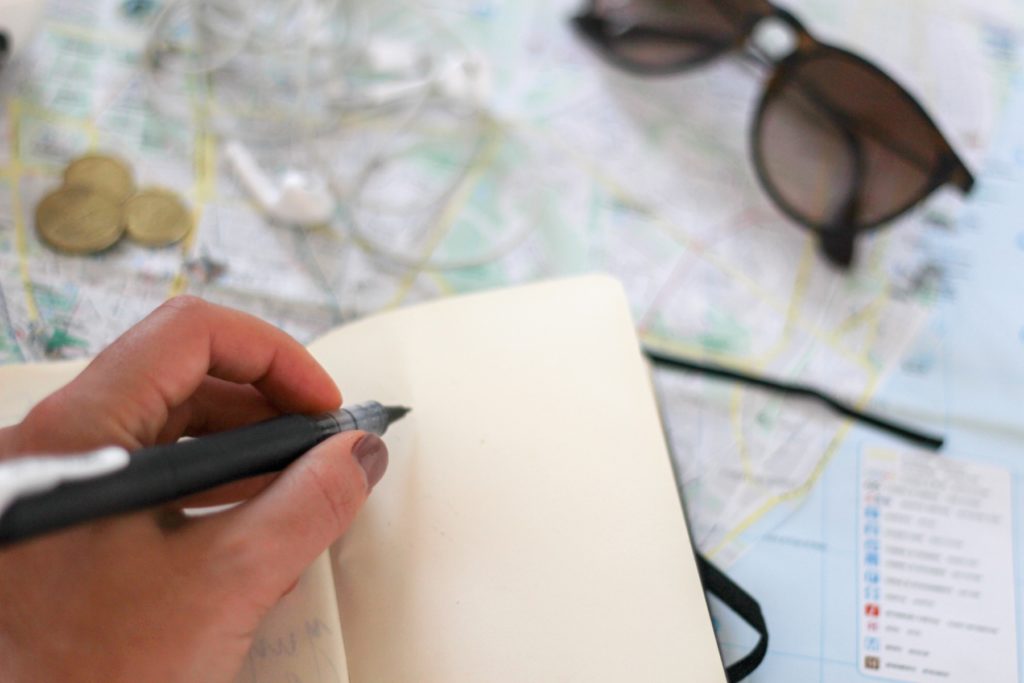
If you’re traveling alone, try to make friends along the way who will give you interesting information. If you have time, read the local newspapers at the hotel, where you can find interesting and topical facts about your destination.
Sort through the tourist brochures, and if you think you’ll find good information inside, don’t take them with you (you’ll make your luggage heavier) but scan the pages with a phone app.
Even if you’re mainly a travel writer, don’t forget that you need multimedia content. Therefore, consider photography and filming. Some even use audio recordings to remember the atmosphere on the spot afterward – the tumult of a crowded market, the deafening roar of a waterfall, the roar of a lion in the savannah.
Conclusion on how to take travel notes
So taking travel notes is a crucial detail for a travel writer. Observe – note – photograph. These are the three essential things you need to use when you’re on the road, and they will undoubtedly help you craft your final travel article or text.
Pin it!
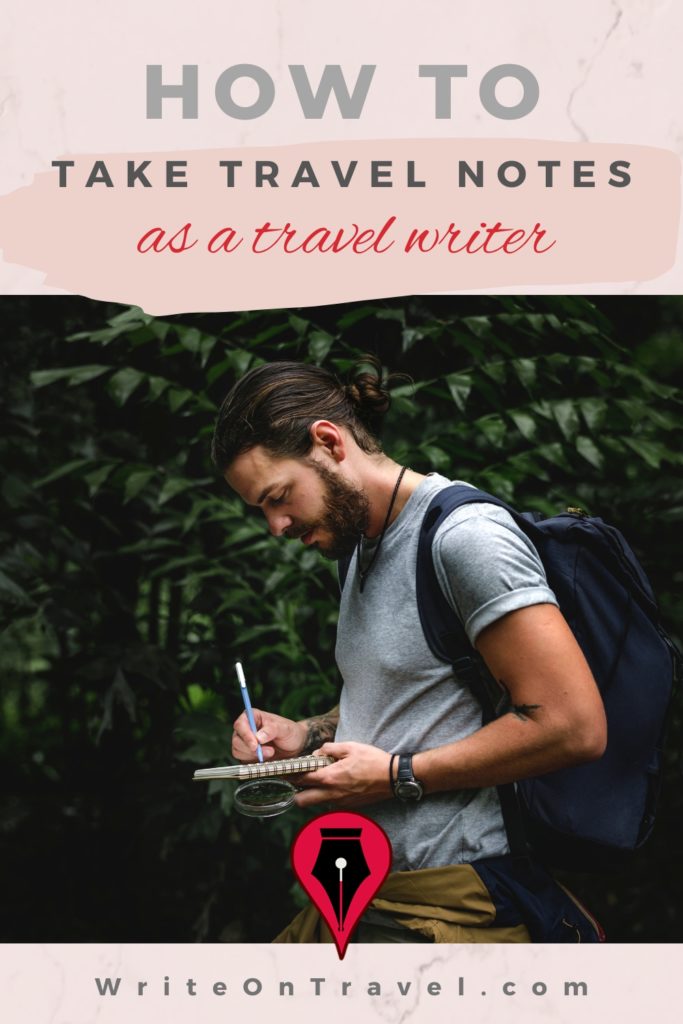
You may also like: 7 tips on how to make a travel story attractive to your readers